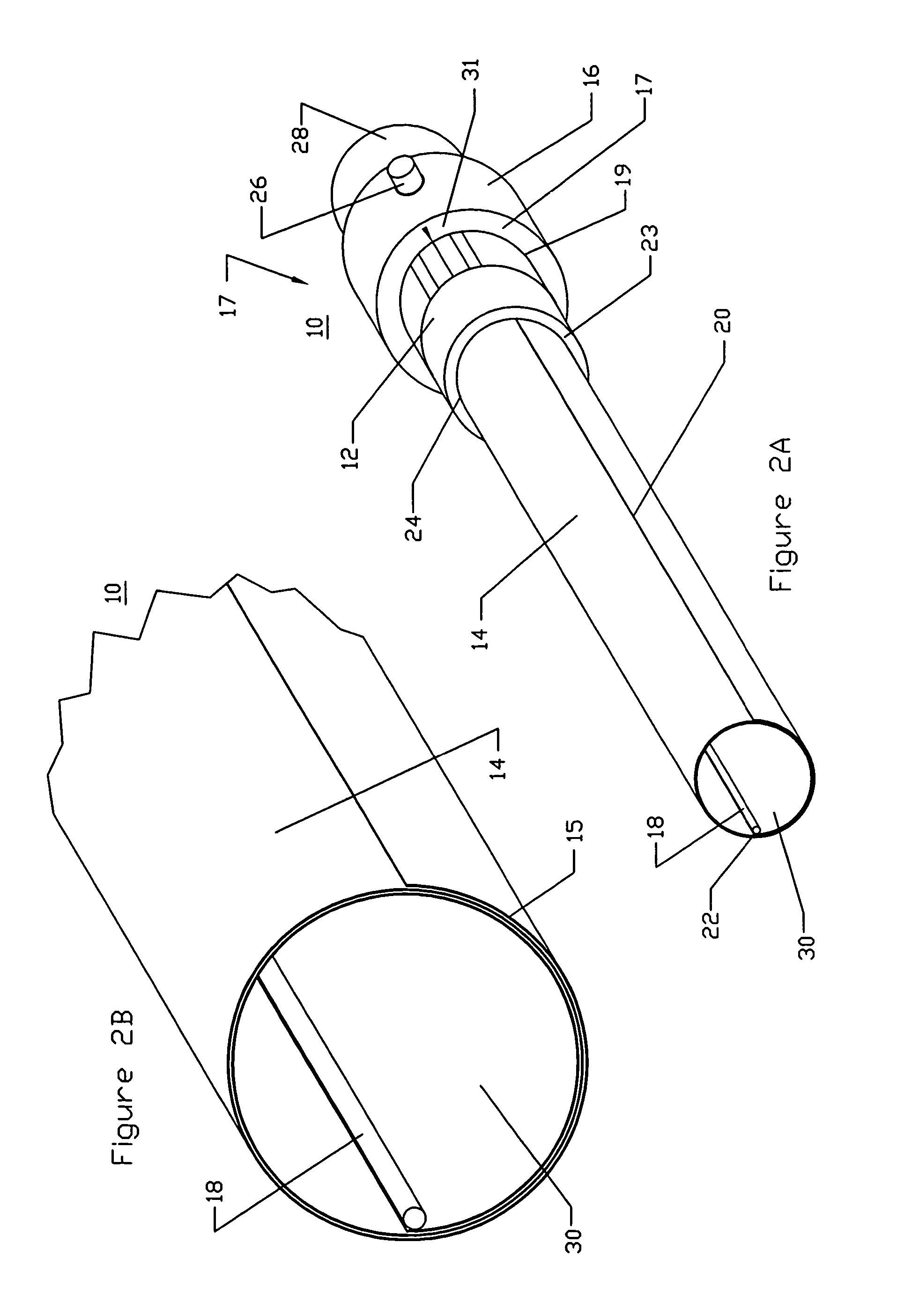Expandable medical access device
a medical access device and expandable technology, applied in the field of expandable medical access devices, can solve the problems of increasing patient discomfort and poor cosmetics, affecting the quality of life of patients, so as to achieve the effect of increasing the diameter of the tubular member
- Summary
- Abstract
- Description
- Claims
- Application Information
AI Technical Summary
Benefits of technology
Problems solved by technology
Method used
Image
Examples
Embodiment Construction
[0035]FIG. 1A illustrates a side perspective view of an exemplary embodiment of an access system 10 in its radially compressed configuration. FIG. 2A is a side perspective view of the access system 10 of FIG. 1A in an expanded or enlarged profile configuration. The system 10 comprises a proximal hub 12 and a tubular shaped sheath 14, which is formed from a thin walled material 15 that is wound about its longitudinal axis. With reference to FIGS. 10A and 10B, in the illustrated embodiment, the thin walled material comprises a generally longitudinally oriented outer edge 20, a longitudinally oriented inner edge 22, a proximal edge 19, a distal edge 21, a periphery surface 25 and a lumen facing surface 27. When wound about its longitudinal axis, the thin walled material 15 defines a central lumen 30 (see FIGS. 1A and 2A). In the illustrated embodiment, the hub 12 comprises a tubular member 23, which forms an inner lumen 24.
[0036]In the compressed configuration (FIG. 1A), the sheath 14 ...
PUM
 Login to View More
Login to View More Abstract
Description
Claims
Application Information
 Login to View More
Login to View More - R&D
- Intellectual Property
- Life Sciences
- Materials
- Tech Scout
- Unparalleled Data Quality
- Higher Quality Content
- 60% Fewer Hallucinations
Browse by: Latest US Patents, China's latest patents, Technical Efficacy Thesaurus, Application Domain, Technology Topic, Popular Technical Reports.
© 2025 PatSnap. All rights reserved.Legal|Privacy policy|Modern Slavery Act Transparency Statement|Sitemap|About US| Contact US: help@patsnap.com



